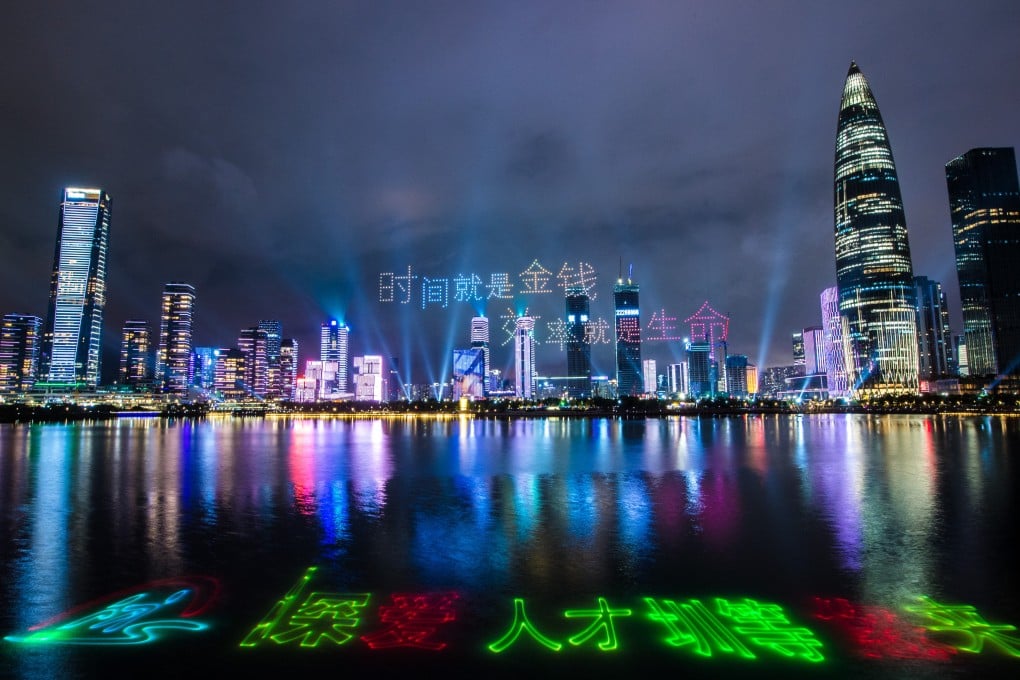Advertisement
How Shenzhen, the hi-tech hub of China, became the drone capital of the world
- Shenzhen is home to more than 600 licensed commercial drone companies, out of a total of about 7,000 in mainland China
- Founded in 2006, DJI now accounts for about 80 per cent of the world’s commercial drone market
Reading Time:5 minutes
Why you can trust SCMP
4

Huaqiangbei, the world’s largest electronics wholesale market area in the Chinese technology hub of Shenzhen, has become the latest Wonderland for geeks, the way Tokyo’s Akihabara was to otaku during the tech bubble at the turn of the millennium. Amid the warren of closet-sized shops and makeshift stalls, the latest catalogue of smartphones, LED lights, holograms, electronic parts and every type of gadget imaginable compete for attention and the spending yuan of consumers.
What began as a Sunday market for factories that assemble gadgets and toys for major global brands, Huaqiangbei has evolved in less than 10 years into a communal focus group – where customer feedback and consumer demand are instantly fed back to hardware and software developers – resulting in a stream of new products that get updated within weeks. It has easily adapted to what consumers want.
What began as a Sunday market for factories that assemble gadgets and toys for major global brands, Huaqiangbei has evolved in less than 10 years into a communal focus group – where customer feedback and consumer demand are instantly fed back to hardware and software developers – resulting in a stream of new products that get updated within weeks. It has easily adapted to what consumers want.
It is also the place where the world’s largest market for recreational drones was born, according to Yang Yang, executive deputy secretary general of the World UAV Federation (WUAVF), the organisation behind the annual Drone World Congress and the Shenzhen International UAV Expo, events which highlight the latest advances in unmanned aerial vehicles.
“DJI and other famous companies that were formed in Shenzhen actually got their start in Huaqiangbei and similar electronics marketplaces in Shenzhen,” said Yang, referring to SZ DJI Technology Co – the world’s largest commercial drone maker.

As a testing ground for China’s market-oriented reforms, Shenzhen used to be infamous for its copycat culture and sweatshops. That has changed over the past two decades, as the city’s fortunes grew alongside the development of companies like telecommunications equipment makers Huawei Technologies Co and ZTE Corp, as well as internet giant Tencent Holdings, which operates the world’s biggest video gaming business by revenue and China’s multipurpose super app WeChat.
The global success of DJI, which makes eight of every 10 non-military drones flown around the world, has helped transform Shenzhen into an international hotspot for the UAV industry over the past 15 years, after Hong Kong-educated engineer Frank Wang Tao founded the company in the southern Chinese coastal city. Shenzhen is home to more than 600 licensed commercial UAV companies operating in mainland China, according to WUAVF data from 2019.
“I think the government has always used DJI as kind of a shining star to attract new talent and more companies to the city,” said David Benowitz, head of research at DroneAnalyst.
In total, mainland China has up to 7,000 commercial UAV firms -from agricultural drone maker XAG in Guangzhou and TT Aviation in Beijing to Yuneec International in eastern Jiangsu province – competing against the likes of Parrot, Lockheed Martin and GoPro in an industry that is forecast to reach US$42.8 billion by 2025, up from US$22.5 billion in 2020.
Advertisement